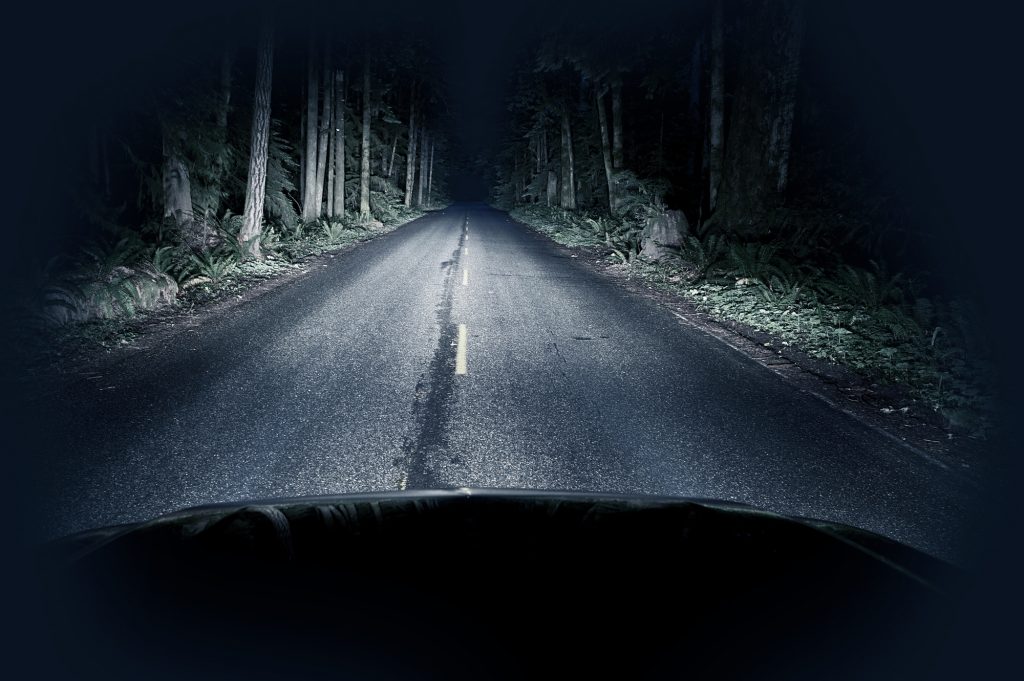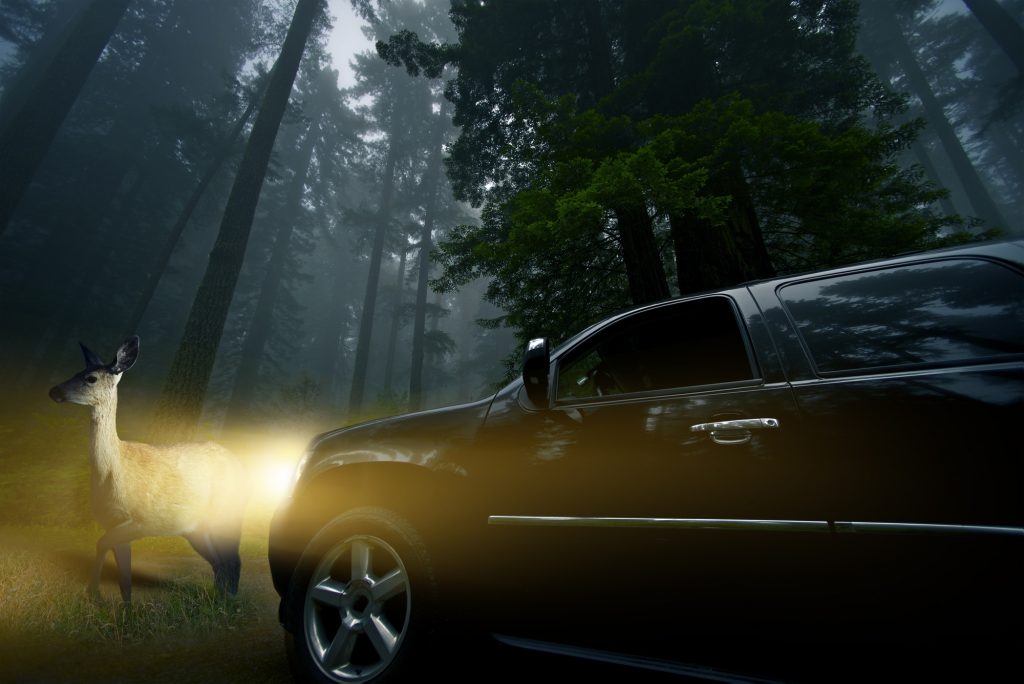Tips To Seeing Better When Driving At Night
We all would like to be able to see better and more clearly when driving at night. With the human eye, shadows and dark areas disappear into blackness and other lights seem to make the shadows and other dark areas even darker. Also, with animals scurrying and running around roads at night, other cars and pedestrians and weather conditions, driving at night can be dangerous and can cause even the most experienced driver stress.
Here are a few tips to help enhance the function of your vehicle’s headlights and make it easier to see while driving at night.

Keep Your Windshield Clean
The first and most important tip to maintaining good visibility at night is keeping your windshield clean. A dusty or grimy windshield can be hard to see out of even in the daytime — and the evening or nighttime darkness makes it worse. Dirty windshields spread the glare of oncoming headlights, making it more difficult to see. Also, be sure to clean the inside of your windshield regularly because there is routine buildup even in the cleanest cars.
The hot wax and protectants they use at automatic car washes can also build up on your windshield, increasing glare at night. If you wash your car regularly at the car wash, occasionally clean your windshield with window cleaner or a combination of hot water and vinegar to remove this coating.
Another tip to keep your windshield clean is to maintain good levels of washer fluid and fresh windshield wiper blades. Dirty or worn-out blades will wipe grime around on the windshield instead of wiping it off. And be sure to run your windshield wipers occasionally in humid or foggy conditions because a fine mist can build up on your windshield without you even realizing it.
Keep Your Headlights Clean
This might seem like a no-brainer but keep your headlights clean. According to the American Automobile Agency (AAA), haze on your headlights can reduce visibility by as much at eighty percent (80%). Road debris and dirt can build up on your headlights and severely impact the brightness of your lights — especially in bad weather conditions.
Also, if you have an older car, spend some time removing any yellow haze from your headlights (kits and tips are available at your local car store, online retailers like Amazon or at mass retailers like Target or Wal-Mart.)
Dim Your Interior Lights
Ambient light adds to driver distraction and reduces the ability to see in the lower-light environment outside of your vehicle. The dash lights on most vehicles have a dimmer, so when you drive at night it’s best to adjust the interior lights down to a level that lets you still see the dash but optimizes your visibility through the windshield.
Check Your Lights
Regularly check all of your lights, including headlights, daytime running lights, reverse and brake lights and your turn signal indicators. Replace any that are burned out. Be sure to use the correct replacement headlights for your car and make sure they are aimed properly. If you need help checking the alignment, check your owner’s manual.
Know When To Use Your High Beams
Most drivers underutilize their high beams. Generally, you don’t need to use high beams in town or in heavy traffic, but high beams can be very helpful on the open road and in rural areas. To avoid temporarily blinding oncoming traffic, be sure to dim your brights when you’re within 500 feet of an oncoming vehicle, and don’t use the high beams when you’re directly behind another vehicle.
Also, never use your high beams in humid, misty, foggy, or rainy conditions. High beams reflect off of the precipitation in the air, increasing glare and shining back at the driver. This wastes the light that is cast and actually makes it harder to see further. Low beams and fog lights (if your car is equipped) aimed at the pavement allow you to see further in those types of weather conditions.
And make sure to use your headlights to stay visible to others on the road. You should turn them on in adverse weather conditions (rain, snow and hail) so that other drivers can see you better — even in daylight.
Collisions with deer and other animals often happen at dusk or at night and are more common from October to January. High beams can help you spot an animal by the reflection (glow) in the animal’s eyes. If you see an animal in or near the road, the safest way to avoid them is by slowing down (and stopping if necessary), rather than swerving.

Minimize Glare From Oncoming Vehicles
If you’re impacted by bright lights coming at you, slow down and stay safely in your lane by shifting your sight to the lane markers or the outside edge of the road until the vehicle has passed you. Minimize the impact of eye fatigue by keeping your eyes moving, scanning around your field of vision instead of staying focused on one location. You can have the cleanest windshield and the best headlights, but they do nothing if you can’t correctly see objects or hazards on the road.
Buy An Intelligent Mazda Vehicle That Helps You See Better
If you want to drive safer at night, consider buying a new Mazda with i-ACTIVSENSE® High Beam Control (HBC) and Adaptive Front-lighting System (AFS) Active Safety Technology. High Beam Control (HBC) detects oncoming cars and vehicles in front of you and automatically switches between high and low beams during night driving, making it easier to drive. Adaptive Front-lighting System (AFS) adjusts the low beam headlights in the direction of travel, increasing visibility on curves and corners.
Mazda vehicles equipped with HBC automatically switch from high beam to low beam when it detects the taillights of a car in front of you or the headlights of an oncoming car. High Beam Control (HBC) also switches the headlights to low beam when you are driving in town at lower speeds.
When combined with the Adaptive Front-lighting System (AFS), HBC provides a wider field of vision, letting you see more clearly and further at night and allowing you to recognize hazards earlier. The system helps you drive with peace of mind at night.
To learn more about Mazda i-ACTIVSENSE® and how all of its intelligent technology keeps you safer and more comfortable, come into Neil Huffman Mazda today.





